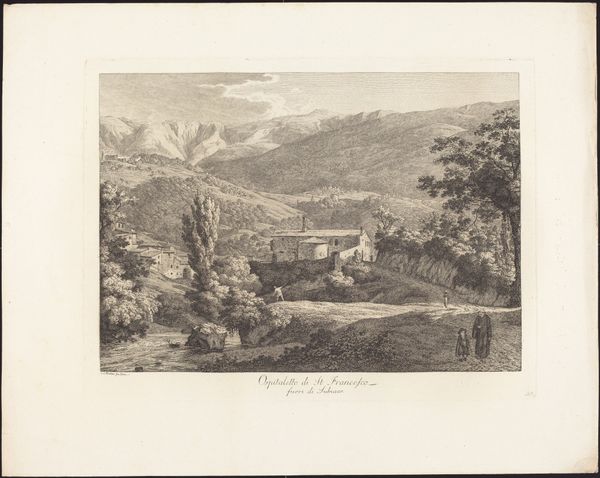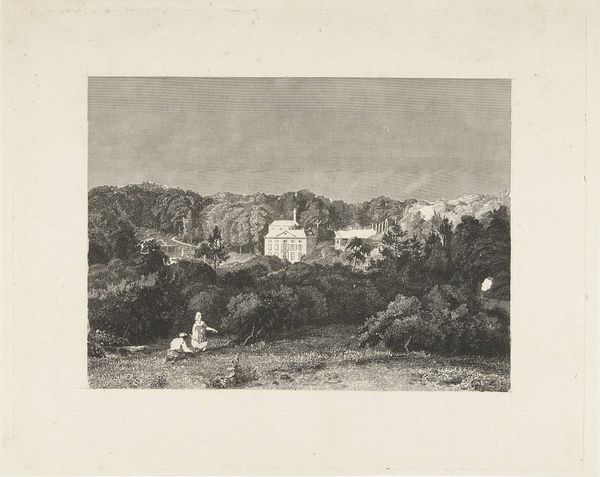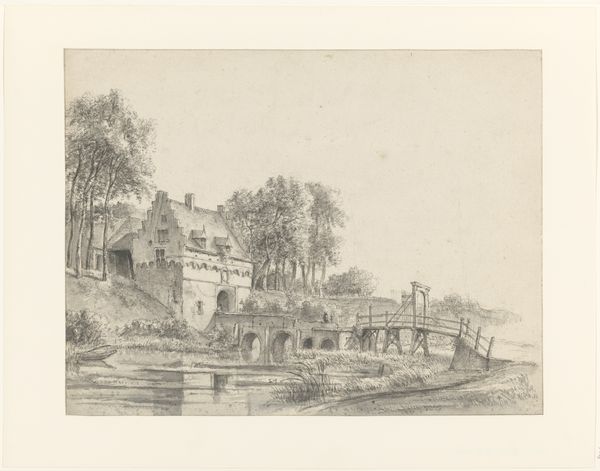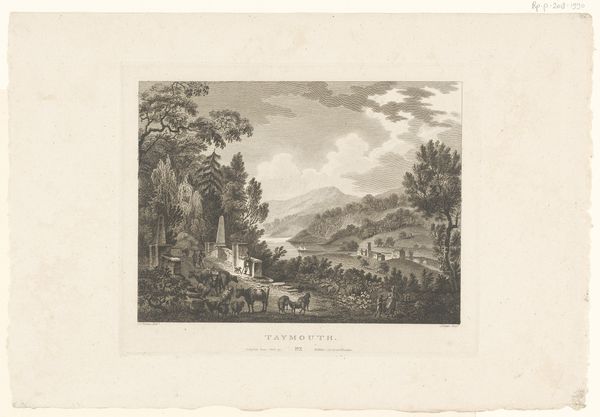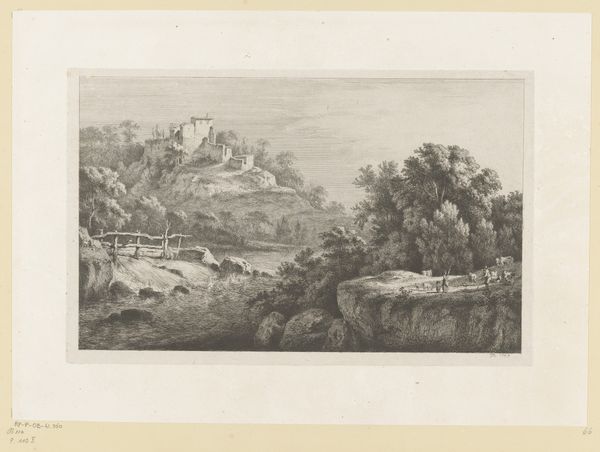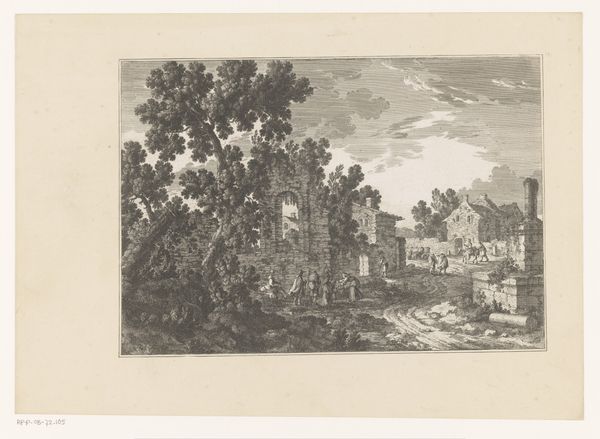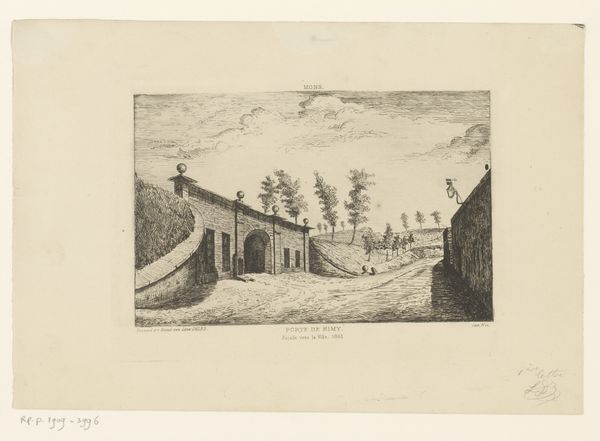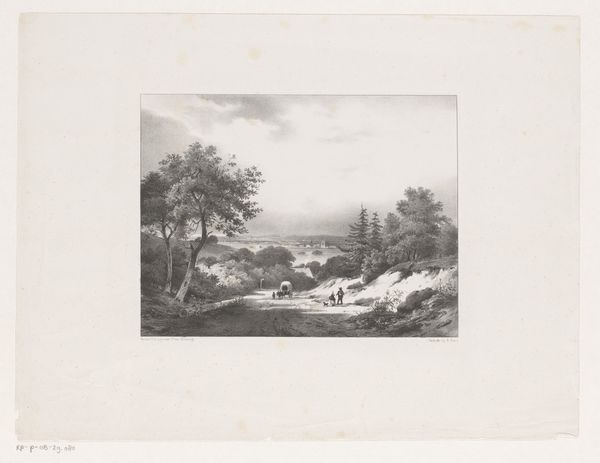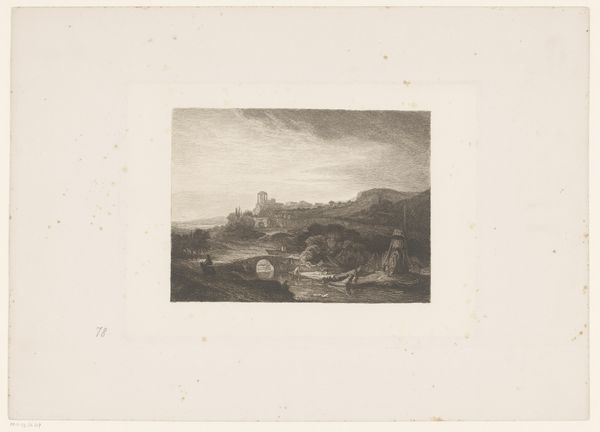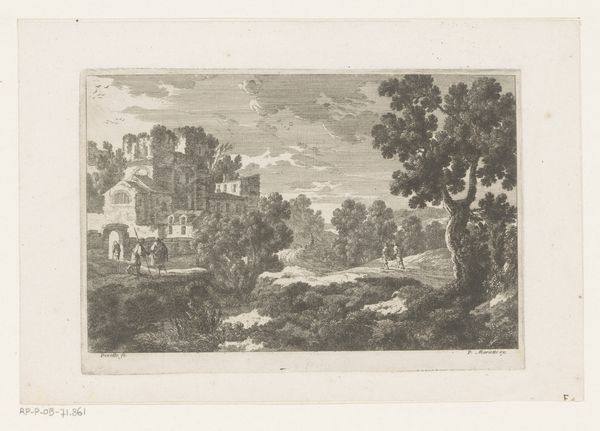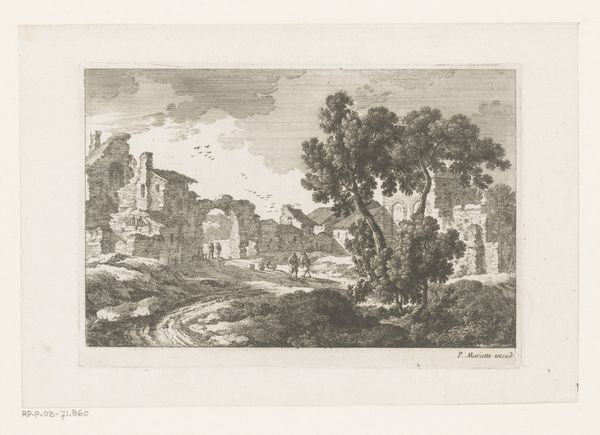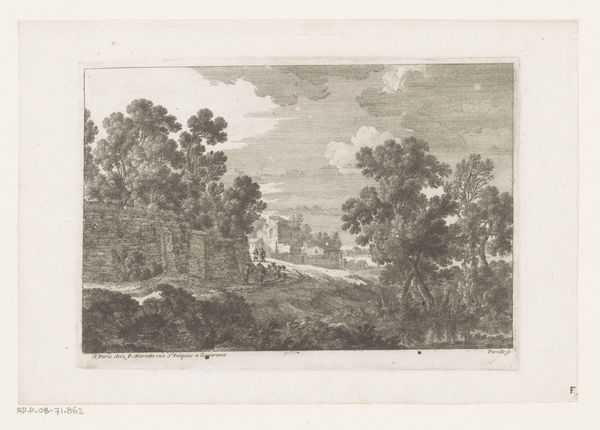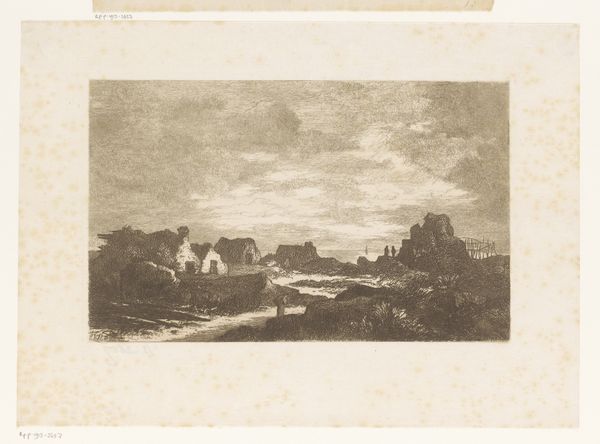
Gezicht op het eiland Barbe in de Saône rivier, met de Romaanse Onze-Lieve-Vrouwe kerk c. 1790 - 1810
0:00
0:00
print, etching, paper
#
neoclacissism
# print
#
etching
#
old engraving style
#
landscape
#
river
#
paper
#
cityscape
Dimensions: height 215 mm, width 322 mm
Copyright: Rijks Museum: Open Domain
Curator: Looking at this image, I feel transported to a tranquil and contemplative space. Editor: Indeed! We’re standing before "View of the Isle Barbe on the Saône River, with the Romanesque Church of Notre-Dame," an etching by Jean-Michel Grobon, dating back to around 1790-1810. It's part of the Rijksmuseum's collection. Curator: Ah, the Rijksmuseum has a fabulous print collection! It’s so delicately rendered; you can almost hear the water lapping against the banks. The use of etching here, these finely hatched lines, creates this atmosphere of serenity and precise observation that's a perfect moment in time. Editor: That river! Water is such a primal symbol of life, of the subconscious…Here it acts as a mirror, reflecting the architectural symbols of faith. Look how the Romanesque church asserts itself. For me it carries a complex web of cultural narratives from that time. Curator: Precisely! This Romanesque architecture acts as a deliberate link to the past. You see this Neo-Classical interest not just in historical accuracy, but in grounding the present in what were thought of as ideal past societies. It becomes symbolic of this specific moment in European history. Editor: So true. Everything points to a constructed idyll…Yet something feels very authentic in how he captures light. Curator: Notice how he’s carefully balanced civilization and nature. This wasn’t simply a pretty picture for the wall, these kinds of images reinforced and aestheticized political and social orders for the increasingly powerful merchant classes. Editor: Almost like propaganda. Do you think he would see it that way, though? Grobon likely approached this with such skill and directness, that he probably did not regard his work that way. Curator: It’s doubtful he saw it as propaganda, but art, regardless of intention, participates in cultural currents. Looking at the scale here I wonder where he intended for this to be viewed and circulated. Editor: Whatever his intention or his audiences, his ability to instill a sense of reflective peace is very palpable to our contemporary viewers.
Comments
No comments
Be the first to comment and join the conversation on the ultimate creative platform.
